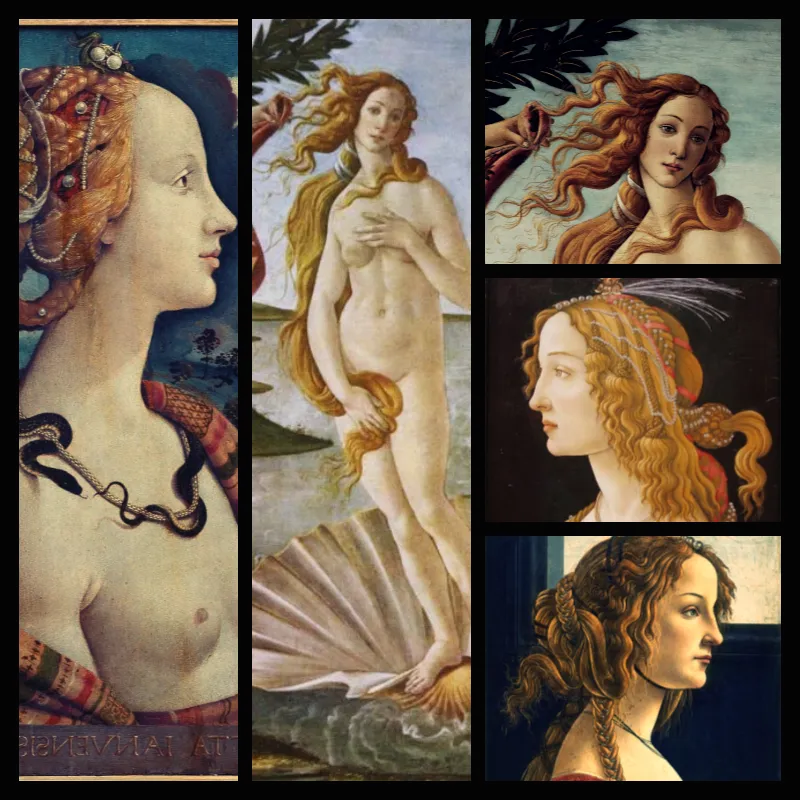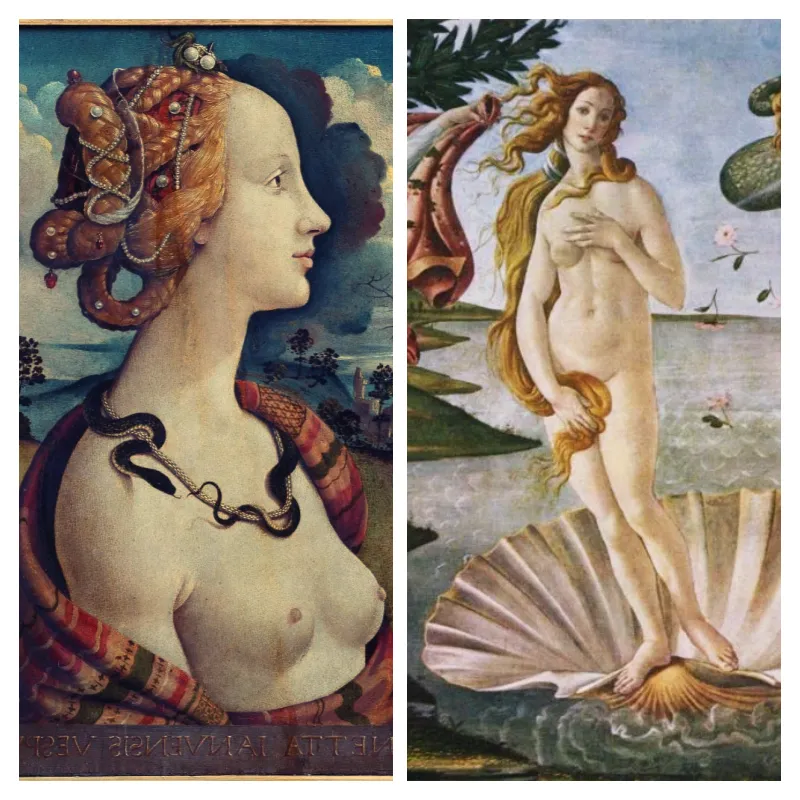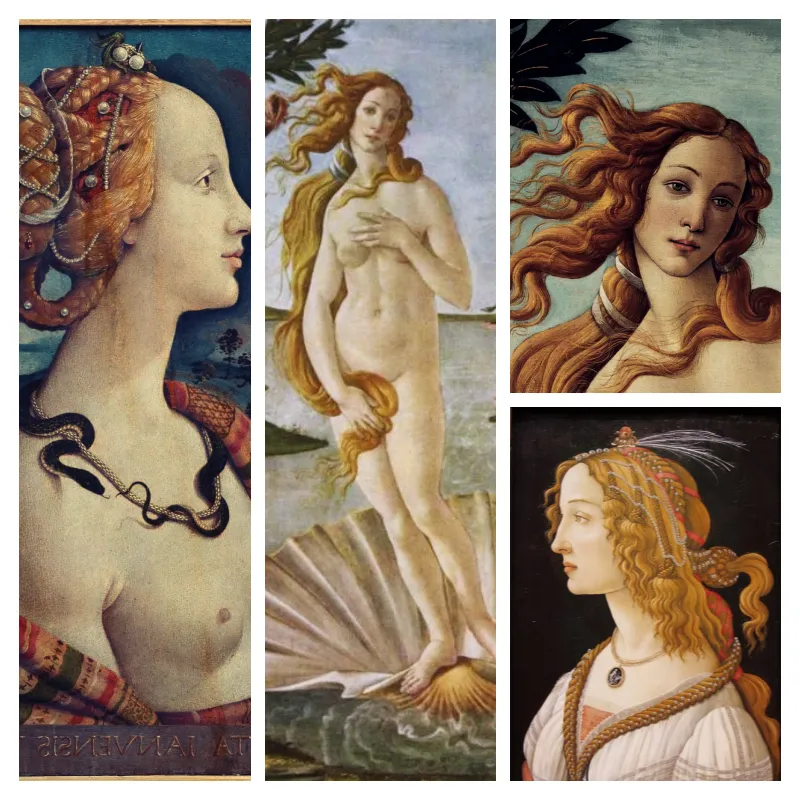
“Simonetta Vespucci, the muse behind Botticelli’s iconic “The Birth of Venus,” captivated Renaissance Florence with her beauty, leaving a legacy that intertwines art, romance, and mystery”
The world of Renaissance art is suffused with myth and grandeur, and few figures capture this mystique as vividly as Simonetta Vespucci, the enigmatic muse immortalized by Sandro Botticelli in his masterpiece, The Birth of Venus. This celebrated painting, depicting the Roman goddess of beauty emerging from a shell, transcends mere sensuality, offering an allegory of divine purity and rebirth. Yet, behind this ethereal vision lies a fascinating real-life story.

Simonetta Vespucci, a noblewoman whose origins are debated between Genoa and Porto Venere, was married to Marco Vespucci, a cousin of the famed explorer Amerigo Vespucci. Arriving in Florence around 1469 at just 16 years old, Simonetta quickly became renowned as the most beautiful woman in Italy, captivating a city full of artists and poets eager to immortalize her grace.
Botticelli was not alone in his admiration. During her time in Florence, Simonetta also posed for portraits by Piero di Cosimo, who depicted her as Cleopatra, and inspired the verses of celebrated poets like Luigi Pulci and Lorenzo de’ Medici. Lorenzo, the influential head of the Medici family, was particularly enamored with Simonetta. Following the tragic assassination of his brother Giuliano, Lorenzo made a bold statement of devotion by commissioning a citywide jousting tournament featuring a banner painted by Botticelli, declaring Simonetta “La Sans Pareille” or “The Unparalleled One.”

Botticelli’s infatuation with Simonetta, however, seems to have been uniquely profound. He famously ensured that her image would forever be linked to the goddess Venus. Curiously, Botticelli completed The Birth of Venus a decade after Simonetta’s untimely death at just 22, during a period of profound mourning in Florence. Despite living until 1510, Botticelli’s final wish was to be buried beside Simonetta, a testament to his enduring devotion. Today, their graves rest together in the Church of Ognissanti in Florence.
Not all scholars agree that Simonetta was the model for The Birth of Venus. Historian Felipe Fernández-Armesto has critiqued the assumption, suggesting it stems from a romanticized notion rather than concrete evidence. Nevertheless, the alignment of Venus’s features with known portraits of Simonetta and Botticelli’s profound personal connection to her lend weight to this enchanting theory.
In the realm of art history, Simonetta Vespucci remains a symbol of beauty and intrigue, her life and legacy entwined with Botticelli’s artistic genius. As art lovers and historians continue to explore her story, the allure of Simonetta Vespucci persists, bridging the gap between myth and reality.



